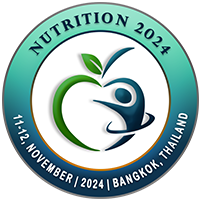
N. Anand Laxmi
ICAR-Directorate of Poultry Research, IndiaTitle: Comparative Study of Some Endocrine and Molecular Parameters Between Two Indigenous Breeds of India and Effect of Selenium supplementation on Egg production during Early and Mid Laying period
Abstract
Chickens belonging to Ghagus and Nicobari breeds were selected at 22 weeks of age. Study was conducted for early laying period ( 24-28 weeks, EP) and mid laying period (32-36 weeks, MP). Plasma levels of Melatonin ,Ghrelin, progesterone and estradiol during EP and MP were estimated in Ghagus and Nicobari breeds. Birds were sacrificed at 26 and 34 weeks of age for collection of jejunum and magnum tissue samples. The samples were processed for extraction of RNA and were further processed for production of cDNA. Gene expression studies for hormones melatonin, ghrelin receptors and amino acid transporters B0AT, CAT, LAT2 and LAT4 were analysed by Real Time PCR using SYBR Green. Additional organic Se enriched yeast was supplemented @ 0.05mg/kg feed.
The mean concentration of melatonin in control group (CG) of Ghagus breed was more and less in Nicobari (P<0.01) during EP when compared to MP. Supplementation of Se (TG) did not have significant effect during EP but increased (P<0.01) the hormone concentration during MP but the effect was vice versa in Nicobari. When comparison was made between CGs of respective breeds and laying periods, the concentration of melatonin in Ghagus was more during both the EP (P<0.01) and MP (P<0.05) laying periods. In both Ghagus and Nicobari the mean concentration of ghrelin hormone was linearly increasing with increase in age of the birds during EP. In both Ghagus and Nicobari birds the difference in the concentration of ghrelin hormone of CGs when compared between EP and MP, it was not significant. Supplementation of Se increased (P<0.05) the plasma hormone concentration only during EP in Ghagus where as in Nicobari supplementation did not cause significant change in the concentration of hormone, at either of the laying periods. When compared between the control groups, of respective breeds and laying periods, the difference in the hormone levels was not significant at either of the laying periods.The mean level of esradiol hormone(CG) was more in EP when compared to MP in Ghagus and and vice versa in Nicobari. Supplementation of Se did not have any significant effect at any of the laying periods in both the breeds. When compared between the CGs of both the breeds during respective laying periods, concentration of plasma esrtadiol was more (P<0.05) in Ghagus during EP and the same was observed to be more during MP in Nicobari, but was not significant.The mean level of progesterone hormone in CGs of Ghagus and Nicobari was more (P<0.01) during EP when compared to MP . Treatment with Se decreased concentration at both EP and MP, whereas in Nicobari the decrease was observed during EP , without any effect at MP. When compared between the CGs of respective breeds, the concentration of hormone is more in Ghagus at both EP (P<0.05) and MP (P<0.01) of the laying periods. Similarly treatment increased expression of hormone receptors (P<0.01) and amino acid transporters (P<0.01) and plasma amino acids (P<0.05) during EP in Ghagus and at MP in Nicobari when compared to respective CGs. Supplementation of Se increased egg production (P<0.01) and weight (P<0.05) significantly where as body weight of Nicobari birds increased (P<0.05) during EP.
It can be concluded that concentration of different physiological parameters was different at EP/MP in the mentioned breeds. Supplementation of Se had differential effect on modulation of physiological parameters in different breeds and its effect on production performance.
Biography
TBA

